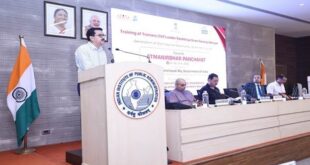- Recently, at the 48th G-7 Summit, the U.S. along with G7 allies unveiled the ambitious Partnership for Global Infrastructure and Investment (PGII).
- The U.S. along with its allies had announced the launch of the Build Back Better World (B3W) in 2021 with the aim of narrowing the 40 trillion dollar infrastructure gap in the developing world.
- Partnership for Global Infrastructure and Investment is therefore a relaunch of the B3W plan.
- The PGII is being seen as the G7’s counter to China’s multi-trillion dollar Belt and Road Initiative (BRI)to build connectivity, infrastructure, and trade projects in Asia, Europe, Africa, and Latin America.
Partnership for Global Infrastructure and Investment
- PGII is a “values-driven, high-impact, and transparent infrastructure partnership to meet the enormous infrastructure needs of low and middle-income countries
- And support the United States and its allies economic and national security interests.
- Under the PGII, G7 will mobilize 600 billion dollars by 2027 to deliver “game-changing” and “transparent” infrastructure projects to developing and middle-income countries.
- S. President announced the country’s pledge to channel 200 billion USD in grants, public financing, and private capital over the next five years for the PGII.
- The European Commission President declared Europe’s pledge of mobilizing 300 billion euros for the partnership over the same period.
Pillars of PGII:
- G7 grouping aims to tackle the climate crisis and ensure global energy security through clean energy supply chains.
- The projects will focus on bolstering digital Information and Communications technology (ICT) networks facilitating technologies such as 5G and 6G internet connectivity and cybersecurity.
- Fibre-optic cable project to link Europe and Latin America.
- The projects aim to advance gender equality and equity.
Benefits to India:
- S. International Development Finance Corporation (DFC) will invest up to USD 30 million in Omnivore Agritech and Climate Sustainability Fund.
- It is an impact venture capital fund that invests in entrepreneurs building the future of agriculture, food systems, climate, and the rural economy in India.
- The Fund seeks to invest in companies that increase food security and promote both climate resilience and climate adaptation in India and it will also improve the profitability and agricultural productivity of smallholder farms.
- It is a technology driven agricultural practice that will increase agricultural prosperity and transform food systems to make farming more resilient and sustainable.
- It includes farmer platforms, precision agriculture, Agri-biotech etc.
Belt & Road Initiative (BRI)
- Belt & Road Initiative (BRI) is an ambitious project that focuses on connectivity and cooperation among multiple countries spread across the continents of Asia, Africa, and Europe. BRI spans about 150 countries (China’s Claim).
- Initially announced in the year 2013, the project involves building networks of roadways, railways, maritime ports, power grids, oil and gas pipelines, and associated infrastructure projects.
- The project covers two parts.
Significance of BRI For China:
- The Belt and Road Initiative (BRI) is the most emblematic of China’s economic and industrial might, as of its ambitions for global, political and strategic influence.
- As infrastructure spending at home became less sustainable, China has shifted the emphasis to boost the global competitiveness of domestic businesses.
- The large infrastructure investments in the least developed and developing countries have enabled China to leverage its influence around the world, potentially altering the established rules of the global order and challenging western powers.
- BRI will strengthen China’s presence in the Eurasian region and put it in a commanding position over Asia’s heartland.
Criticism:
- Western critics have attacked the initiative as new colonialism, or the Marshal Plan for the 21st century.
- BRI is also being seen as a part of China’s debt trap policy, wherein China intentionally extends excessive credit to another country with the intention of extracting economic or political concessions from the debtor country.
SOURCE: THE HINDU,THE ECONOMIC TIMES,MINT
 Chinmaya IAS Academy – Current Affairs Chinmaya IAS Academy – Current Affairs
Chinmaya IAS Academy – Current Affairs Chinmaya IAS Academy – Current Affairs



